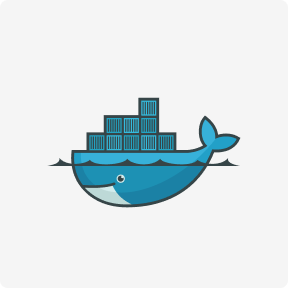And more shared code across platforms means less repetition, which means better code. As mentioned earlier, multiplatform apps are designed to run identically on different mobile platforms. Cross-platform frameworks allow you to write shareable and reusable code for the purpose of developing these apps. The second step is to configure the framework search path of the produced binary. The binary uses the path to look for the required frameworks.
The major such platforms are Android app development and iOS app development. Generally, different coding styles are used for different platforms. Sometimes it’s a hideous process to generate a single app for multiple platforms.
iOS
Kotlin speeds up the process of turning your idea into a real toy. It helps developers write code faster and more efficiently. In simple terms, Kotlin acts as a special bridge between Android and iOS.

It helps developers use the same code for both platforms, just like wearing the same outfit for formal and casual reasons. That’s spurred the creation of software tools that try to bridge the development gap. Other services aim to make app development itself easier with no-code or low-code solutions.
What is Kotlin?
Maintain a single codebase for networking, data storage and data validation, analytics, computations, and the other logic of your applications. These are just a few examples of the multi-platform libraries and tools available in Kotlin. As the language and ecosystem continue to evolve, more libraries and frameworks may emerge to further enhance the capabilities of Kotlin’s multi-platform development. Time-efficient by sharing the code, integration with existing processes is simple, performance is not compromised by using Kotlin, and access over various platforms are extensive pros of Kotlin.
- You’ve shared the business logic of your application, but you can also decide to share other layers of your application.
- The Kotlin plugin should be compatible with the Kotlin Multiplatform Mobile plugin.
- If you don’t see a Download button next to the most version of Android, you’re in luck!
- The response JSON from the Giphy API will map onto these data classes.
- KMP can also be introduced iteratively, so you can implement it with no disruption to your current project.
- Run your cross-platform application for Android to make sure it works.
While both Android and Backend are in Kotlin/JVM, it is reasonable to make module which will provide actual declarations for both of them. This is how common-js and common-jvm modules were defined — to provide language specific Date actual declarations. Both modules contains only single file with actual declarations that corresponds to expected declarations in Date.kt file.
We prepared for you Kotlin Cheat sheet, so you can have the most important elements close at hand!
Like any other solution, cross-platform mobile development has its pros and cons. While generating the code for a specific platform, the Kotlin compiler merges expected and actual declarations and generates a single declaration with actual implementations. You’ve shared the business logic of your application, but you can also decide to share other layers of your application. For example, the ViewModel class code is almost the same for Android and iOS applications, and you can share it if your mobile applications should have the same presentation layer. As the need and urge for new apps for daily purposes and the upliftment of any process. Using Kotlin could help in such a time-saving process in app development.

You can learn more about connecting to platform-specific APIs. To use cross-platform code in your Android application, connect the shared module to it, move the business logic code there, and make this code cross-platform. It’s a new tool in the toolbox as opposed https://www.globalcloudteam.com/ to replacing the toolbox. Nile Frater created NoCode.Tech, a website that aggregates resources to build projects without code. Low-code or no/zero-code tools — often drag-and-drop — help people who want to create digital projects without knowing how to code.
Gradle Build Script
This is why cross-platform mobile development solutions have emerged as one of the most popular software development trends. One of the major Kotlin Multiplatform use cases is sharing code between mobile platforms. You can share application logic between iOS and Android apps and write platform-specific code only when you need to implement a native UI or work with platform APIs.

The APIs in Compose Multiplatform are the same ones that have already been tried and tested in Jetpack Compose. Global companies and start-ups alike have already leveraged Kotlin Multiplatform Mobile to optimize and accelerate their mobile development efforts. The benefits of this approach are apparent from the stories of the companies that have already adopted it.
Join the community
Each of these frameworks has its own capabilities and strengths. Depending on the tool you use, your development process and the outcome may vary. The debate around native and cross-platform development remains unresolved in the tech community.
As the first step on your journey, we invite you to watch this video from the Kotlin Team and some of our early adopters. It offers insight into the potential uses of Kotlin Multiplatform Mobile, how you can benefit from it, how it works under the hood, and of https://www.globalcloudteam.com/10-reasons-why-you-need-kotlin-development-company/ course, our plans for the future of the technology. The documentation section is your trusted resource when you are working with KMM. You will find content for all levels of expertise, from tutorials to get you started to more advanced development topics.
Create your first cross-platform app
More importantly for app development, these tools alleviate the need for developers to consider the ever-changing specifications of smartphones. KMP can also be introduced iteratively, so you can implement it with no disruption to your current project. Next time you implement a feature across your app’s various platforms, use KMP to write the business logic, deploy it to each platform, and program the UIs natively. For iOS, that means business logic in Kotlin and UI logic in Swift. DRY (or Don’t Repeat Yourself) is one of the foundational principles of programming, but repeating lots of logic has been often necessary to develop an app running on multiple platforms.
